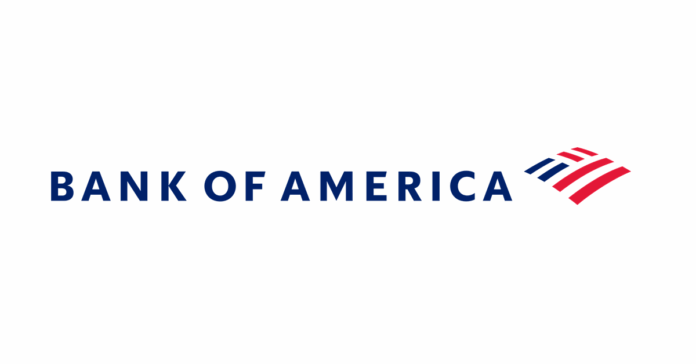NEW YORK, NY – For investors seeking undervalued opportunities, Bank of America Corporation (BAC) frequently appears on the radar. With its recent closing price at $48.93, a deep dive into its intrinsic value suggests BAC might be a “Screaming Buy”.
An in-depth analysis using the Buffett-Inspired and McGrew Valuation Methods, which are specifically adapted for financial institutions, points to an intrinsic value of $65.24 per share for Bank of America. This valuation indicates that BAC is currently trading at a 25% discount, precisely at the margin of safety threshold, which is a key indicator for value investors.
Understanding the Valuation Framework
Unlike non-financial firms that typically rely on Free Cash Flow (FCF), the valuation of a bank like Bank of America hinges on Distributable Earnings. Distributable Earnings are calculated by adding Net Income and Non-Cash Charges (like Depreciation and Amortization), then subtracting the Increase in Regulatory Capital Required for Growth.
For this analysis, BAC’s TTM (Trailing Twelve Months) Net Income was $27,854,000,000, and TTM Depreciation and Amortization was $2,216,000,000. The increase in regulatory capital was assumed to be $0 due to data limitations. This results in TTM Distributable Earnings of $30,070,000,000.
To classify BAC, its 5-year Compound Annual Growth Rate (CAGR) of Distributable Earnings was calculated to be approximately 9.32%. As this falls below the 10% threshold, BAC is classified as a non-growth stock. Consequently, both the Buffett-Inspired and McGrew valuation methods utilize a conservative 3% growth rate for projecting Distributable Earnings over the next 10 years, followed by a 2.5% perpetual growth rate. An 8% discount rate was applied, derived from a 4% Treasury yield plus a 4% premium.
After projecting Distributable Earnings for 10 years and calculating the Terminal Value, the Enterprise Value was determined to be approximately $558,004,160,061. Adjusting for Net Debt, which stands at $64,755,000,000 , the Equity Value is calculated at $493,249,160,061. With 7,560,084,716 shares outstanding , the intrinsic value per share rounds out to $65.24. Applying a 25% margin of safety, the target buy price is $48.93.
Robust Financial Health
Beyond intrinsic value, Bank of America demonstrates solid profitability metrics. Its TTM Return on Equity (ROE) stands at approximately 9.76% , reflecting efficient use of shareholder capital. Even more impressive is its Return on Tangible Common Equity (ROTCE) at roughly 12.47% , underscoring the bank’s ability to generate returns from its tangible assets, excluding intangible assets like goodwill. These figures are based on TTM Net Income to Common Shareholders of $26,351,000,000.
Why BAC Could Be a Strong Investment
Several factors contribute to BAC’s appeal as a compelling investment opportunity:
- Strong Fundamentals: The robust ROE and ROTCE indicate healthy profitability, supported by diversified revenue streams from retail banking, wealth management, and investment banking.
- Valuation Discount: The current trading price of $48.93, a 25% discount to its intrinsic value, offers a substantial margin of safety for value-oriented investors.
- Stable Financial Services Sector: As a leading institution, BAC benefits from a resilient business model, backed by significant cash reserves ($280.86 billion) and manageable net debt of $64.75 billion.
- Dividend Appeal: BAC’s commitment to returning capital to shareholders, evidenced by TTM dividends paid of $9.536 billion, adds to its attractiveness for income-focused investors.
Risks to Consider
Despite the positive outlook, potential investors should be aware of certain risks:
- Interest Rate Sensitivity: Banks are inherently sensitive to interest rate fluctuations, which can impact net interest margins. While TTM Net Interest Income was $56.471 billion, rising rates could squeeze margins if not effectively managed.
- Regulatory Risks: The assumption of zero increase in regulatory capital might not hold true, as banks are subject to stringent capital requirements that could potentially reduce Distributable Earnings.
- Economic Uncertainty: Broader macroeconomic factors, such as inflation or recession risks, could influence loan demand and credit quality, thereby impacting BAC’s overall earnings.
- Data Limitations: The analysis faced limitations due to the absence of restricted cash data, which could lead to an overestimation of net debt for a bank, and the assumption of no increase in regulatory capital, potentially overestimating distributable earnings. The reliance on provided financials without real-time data from sources like SEC EDGAR or Yahoo Finance is also a noted constraint.
In conclusion, Bank of America Corporation appears to be a compelling investment opportunity based on the robust valuation analysis. Its strong financial health and discounted valuation suggest significant upside potential for value investors. However, as with any investment, thorough due diligence and an awareness of macroeconomic risks are crucial before making investment decisions.

